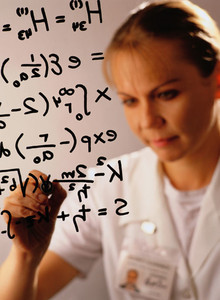EMA has been successful in devising a system for authorising the marketing of biosimilar products and 14 biosimilars are currently on the market in the major countries of the EU [1]. Generally, biosimilars are priced about 30% less than the originator product. This seems to be sufficient to gain significant (~ 30%) market share in a year or two though it keeps biosimilars very expensive. This is in dramatic contrast to the situation in America. In 2010 the ‘biosimilars statute’ (BLA) eventually came into force as the result of the Patient Protection and Affordable Care Act. The proposed rule involves two particularly onerous requirements that the EU process avoids.
The first is the question of degree of similarity.
Biosimilar or interchangeable?
Most biotherapeutics are mixtures of closely related compounds, some of which are probably more active than others. Today, the state-of-the-art manufacturing struggles to deliver material that is similar to the prior batch from the same facility and team. Identical is currently not possible. The European approach has been to go for biosimilars, which cannot be regarded as interchangeable. The US biosimilars statute is trying to go further, to regulate for interchangeability. This makes the whole process much more difficult. Nevertheless, at meetings such as the 2011 National Biotechnology Conference, organised by the American Association of Pharmaceutical Scientists, scientists have generally reported successful case histories of problems and solutions [2]. It seems that the technical issues relating to biosimilars can be solved with brains, time and money.
The second area, dominated by litigation, is even more challenging.
Market exclusivity periods
The statute establishes a 12-year period of market exclusivity from the date of licensing of a biological product, which may be extended by six months of paediatric exclusivity. The first four years, or 4.5 years with paediatric exclusivity, was intended to be a period of data exclusivity during which time an application for a biosimilar or interchangeable version of the originator BLA product may not be accepted for review by FDA. FDA still has to clarify this, as innovator companies are pressing for the 12.5 years to apply to both market and data exclusivity. Court intervention may be required.
After approval, the first biosimilar approved will also enjoy a period of exclusivity for several (perhaps seven) years. During this time, the biosimilar will be the sole competitor to the originator product. A similar approach has already been tried, and led to peculiar (anticompetitive) market behaviour, including de facto extension of the patent period for the originator product. Essentially, two approved firms does not guarantee competitive or market-driven pricing.
The patenting system
BLA holders and biosimilar applicants are already studying the statute to assess its provisions and incentives and identify loopholes. As with its earlier counterpart, the Hatch–Waxman Act of 1984 governing generics, when FDA starts to implement the biosimilar statute many unresolved issues will certainly surface regarding execution and operation of the patent dispute provisions.
Under the proposed rule the follow-on developer provides the innovator with a complete file describing manufacturing and QC protocols within 15 days of filing with FDA [3]. The innovator is expected to examine this file and respond in 60 days with a list of patents that may be infringed. The follow-on developer has 60 days to address each claim in detail, and this includes explaining why the claim is not infringed. The innovator has another 60 days to refute the claims of irrelevance. Then the rule calls for a 15-day period to negotiate a resolution. The next steps are less well described, but probably involve petitions for injunctions. Adding it up, the process takes more than a year, and involves thousands of hours of lawyer time. Each lawyer year can add up to a million dollars, meaning that a legal team can quickly run up a bill of US$10 million.
Will intractable legal and business issues combine to kill biosimilars in the US by not offering an attractive risk–reward ratio? Will the small number of interchangeable drugs and the high prices wreck President Obama’s intention to make biological drugs more available, at more affordable prices? Or will forecasts that the global market for biosimilars may reach US$3.7 billion in 2015 according to 2011 data from Datamonitor [4] persuade the biotech industry to press forward strongly in the US? Only time will tell.
Related articles
FDA hearing on biosimilars: focus on characterisation and clinical trials
FDA holds public hearing on biosimilars pathway
References
1. GaBI Online - Generics and Biosimilars Initiative. Biosimilars approved in Europe [www.gabionline.net]. Mol, Belgium: Pro Pharma Communications International; [cited 2011 November 18]. Available from: www.gabionline.net/Biosimilars/General/Biosimilars-approved-in-Europe
2. Stevenson, RL. 2011 AAPS National Biotechnology Conference Focuses on Biosimilars: Biobetters May Be a Better Bet. 22 July 2011.
3. Bonilla JW, Beaver N. The New US Biosimilar Legislation, One Year Later. BioProcess International 2011;9(5):22-30.
4. GaBI Online - Generics and Biosimilars Initiative. Stada and Richter to collaborate on biosimilar development [www.gabionline.net]. Mol, Belgium: Pro Pharma Communications International; [cited 2011 November 18]. Available from: www.gabionline.net/Biosimilars/News/Stada-and-Richter-to-collaborate-on-biosimilar-development








 0
0











Post your comment